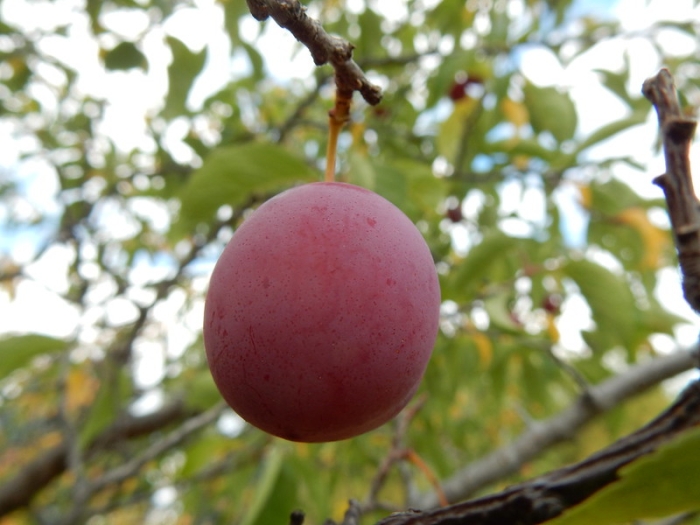American Plum
(Prunus americana)
American Plum (Prunus americana)
/
/

Matt Lavin
CC BY-SA 2.0



































































Estimated Native Range
Summary
American Plum is valued for its spring blossoms, wildlife-friendly fruit, and adaptability to a range of soil textures, excluding fine soils like silt or clay. It is often used for naturalistic plantings, wildlife gardens, and as a windbreak or hedge. In cultivation, it thrives in full sun to part shade and requires medium water, with a preference for well-drained soils. While it is winter-hardy, it has low tolerance for shade, drought, and fire. Gardeners should be aware of its potential to form dense thickets through suckering, which can be managed by pruning.CC BY-SA 4.0
Plant Description
- Plant Type: Shrub, Tree
- Height: 15-25 feet
- Width: 15-25 feet
- Growth Rate: Moderate
- Flower Color: White
- Flowering Season: Spring
- Leaf Retention: Deciduous
Growth Requirements
- Sun: Full Sun, Part Shade
- Water: Medium
- Drainage: Fast, Medium
Common Uses
Bee Garden, Bird Garden, Butterfly Garden, Drought Tolerant, Edible*Disclaimer: Easyscape's listed plant edibility is for informational use. Always verify the safety and proper identification of any plant before consumption., Erosion Control, Fire Resistant, Fragrant, Hedges, Low Maintenance, Rabbit Resistant, Salt Tolerant, Showy Flowers
Natural Habitat
Open woodlands, forest edges, grasslands, and along streams
Other Names
Common Names: Goose Plum , American Red Plum , American Wild Plum , Wild Plum , Wild Red Plum , Wild Yellow Plum , Marshall’s Large Yellow Sweet Plum , Amerikapflaume , Amerikanische Pflaume , Ciruelo Americano
Scientific Names: Prunus americana , Prunus mollis , Prunus americana var. floridana , Cerasus hyemalis , Prunus coccinea , Prunus mississipi , Cerasus americana , Cerasus canadensis , Padus canadensis , Prunus acinaria
GBIF Accepted Name: Prunus americana Marshall